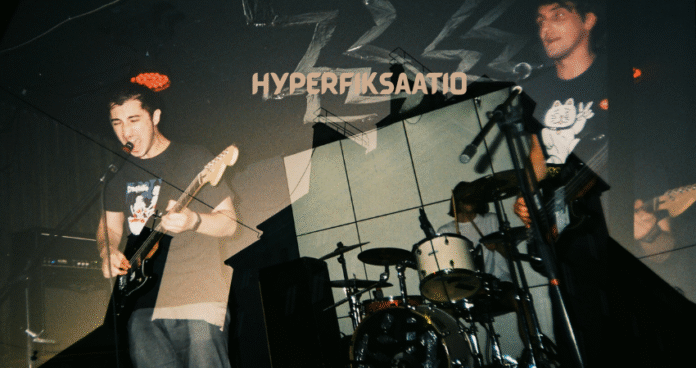There are moments in life when the world outside fades, when hours collapse into minutes, and when every fiber of being becomes tethered to a single point of passion. This is hyperfiksaatio — a word borrowed from Finnish, echoing the phenomenon we know as hyperfixation.
It is not just focus. It is fire. It is a storm contained in the skull, a river that refuses to be dammed. One moment you are simply curious, and the next, you are consumed — you lose yourself in a book, a game, a project, an idea — until hunger, sleep, and conversation become distant, almost irrelevant.
To some, it is a gift. To others, it is a shadow. And to those who live in its grip, it is both: the most dazzling and dangerous part of the mind’s symphony.
In this journey, let us walk through the poetry and pain of hyperfiksaatio. Let us hold its brilliance in one hand and its burden in the other, and see what it means to live in a world where focus burns too brightly.
2. What is Hyperfiksaatio?
2.1 Origin of the Word
“Hyperfiksaatio” is a Finnish translation of the English “hyperfixation.” It comes from hyper (beyond, excessive) and fixation (a deep attachment or focus). The word itself feels sharp, deliberate, a reminder that this is not ordinary attention, but something amplified — an intensity that borders on compulsion.
2.2 Distinguishing Hyperfixation from Ordinary Focus
Ordinary focus is like a candle flame: steady, useful, easily extinguished. Hyperfixation is wildfire: it leaps across hours, devours distractions, and consumes everything in its path until it finally collapses under its own weight.
To be in hyperfixation is to be absorbed — the outside world grows distant, your body becomes background noise, and all that remains is the subject of your fixation. This can feel euphoric, productive, and transformative — but it can also steal balance, sleep, and well-being.
3. The Beauty in Hyperfixation
3.1 Creativity and Artistic Flow
Artists often know this state by another name: flow. The painter lost in strokes, the musician who forgets to eat, the writer who wakes at dawn only to find they’ve been typing since sunset — all are living within the pulse of hyperfixation.
In these hours, creation feels effortless. Ideas leap like sparks, the mind feels boundless, and what emerges is often breathtaking. Many masterpieces of art, literature, and music were likely born in this crucible of relentless immersion.
3.2 Innovation and Deep Work
Scientists, inventors, and thinkers have also thrived under hyperfixation. Marie Curie, Nikola Tesla, even modern tech innovators — all have shown signs of this consuming drive. To dwell on one problem so fully, so obsessively, is to sometimes stumble upon breakthroughs that a scattered mind might never uncover.
When directed, hyperfiksaatio is a superpower — it carves depth where others skim surfaces, it builds worlds where others pass by. It is the mind at its most relentless, luminous, and alive.
4. The Shadows of Hyperfixation
4.1 Burnout and Neglect
But every flame leaves ash. Hyperfiksaatio can strip away balance, pulling people so deeply into their passions that the body is neglected. Meals are skipped. Sleep is postponed. Relationships grow thin. Work deadlines crumble. And when the fire burns out, what remains is exhaustion — a mind that cannot focus on anything, not even the obsession that once defined it.
4.2 Emotional Whirlwinds
There is also heartbreak in hyperfixation. Interests that once felt like home can suddenly vanish. The brain that once refused to let go may now refuse to hold on. The crash after hyperfixation often leaves emptiness, guilt, and confusion. Why can’t I stay consistent? Why can’t I be normal?
This unpredictability turns joy into sorrow, passion into shame. It is a cycle of highs and lows, of soaring immersion and painful detachment.
5. Hyperfiksaatio in ADHD and Neurodivergence
5.1 Hyperfixation vs Hyperfocus
Hyperfixation often appears in people with ADHD, autism, and other forms of neurodivergence. While “hyperfocus” is usually described as the ability to lock onto a task with intensity, hyperfixation tends to be more emotional and immersive — not always productive, not always chosen, but deeply consuming.
5.2 A Double-Edged Gift
For the neurodivergent, hyperfiksaatio is both an ally and an enemy. It fuels creative projects, passions, and deep learning. But it also disrupts daily life, making consistency a challenge and balance elusive.
To live with hyperfiksaatio is to carry both brilliance and burden — to know what it means to shine too brightly, and sometimes, to burn out too quickly.


